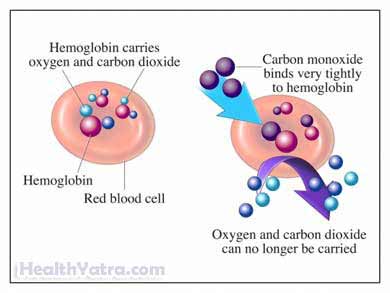Definition
Hyperbaric oxygen therapy (HBOT) involves breathing 100% oxygen in a sealed chamber. This concentration is five times higher than the normal air we breathe. The chamber is also pressurized to create 1.5 to 3 times normal atmospheric pressure. These changes can improve blood circulation and the blood’s ability to deliver oxygen to the body.
Reasons for Procedure
This procedure has been used to treat many health problems, including:
- An air bubble (embolism) which gets into the circulatory system and blocks blood flow
- Decompression sickness, which can occur when divers or miners come to the surface too quickly
- Carbon monoxide poisoning
- Wound healing, especially in patients with poor circulation
- Radiation therapy injuries following treatment for cancer
- Skin grafts, flaps, or burns

Possible Complications
If you are planning to have HBOT, your doctor will review a list of possible complications, which may include:
- Mild discomfort
- Nearsightedness (myopia), which can last for weeks or months
- Sinus damage, ruptured middle ear, or lung damage
- Damage to the ear drum (tympanic membrane)
- Oxygen toxicity, which can cause seizures, fluid in the lungs, or respiratory failure
- Worsening symptoms or increased risk for lung problems in people with congestive heart failure or lung disease
Be sure to discuss these risks with your doctor before the procedure.
What to Expect
Prior to Procedure
- Wear comfortable clothes.
- Bring a book or an activity that you can do in the chamber.
Description of the Procedure
You will lie down on a padded table, which slides into a tube. This is called a single-person chamber. In some cases, the chamber may be large, holding more than a dozen people.
A technician will gradually pressurize the chamber with 100% oxygen. You will be able to talk to this person. While in the chamber, you will be instructed to:
- Relax and breathe normally.
- If your ears pop or you have discomfort, tell the technician. She may be able to lower the pressure.
- Swallow or blow with your nose pinched to relieve discomfort.
- After getting to the right pressure, place a clear plastic hood or mask over your head. This will deliver oxygen to you.
If you are at high risk for oxygen toxicity, you may be allowed to breathe regular air for brief periods.
Immediately After Procedure
Over a period of several minutes, the technician will slowly depressurize the chamber. You will likely have some ear popping and feel light-headed and tired. However, you should be able to go back to your daily activities. You may have more than one session over a period of several days.
How Long Will It Take?
½ hour to 2 hours
How Much Will It Hurt?
You will not have any pain. Your ears may feel full.
Average Hospital Stay
Unless you have another medical condition, you will be able to go home after HBOT.
Post-procedure Care
In most cases, there is no special care after treatment. Be sure to follow your doctor’s instructions .
Call Your Doctor
After you leave the hospital, contact your doctor if any of the following occurs:
- Discomfort or pain in your sinuses or ears
- Onset of seizures
- Vision problems
- Cough, shortness of breath, or chest pain
In case of an emergency, call for medical help right away.
